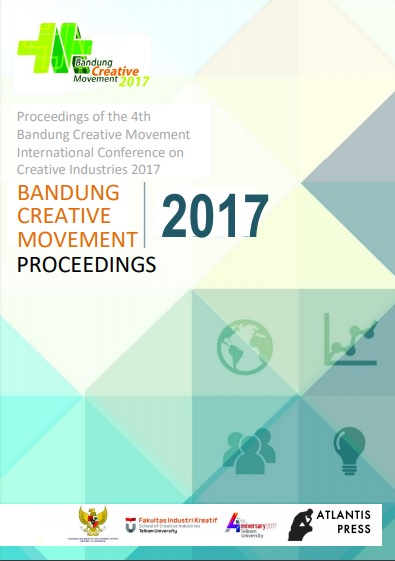Development of a Bus Stop Design Guideline: Case Study on the Main Campus of Universiti Sains Malaysia (USM)
Abstrak
Non-conducive bus stop designs can cause various problems to passengers, bus drivers and other vehicles on the road. A preliminary survey has revealed that specific guidelines have yet to be established as a reference for bus stop designs – to cater for consumer needs – especially in Malaysian university campuses. This study was conducted to initiate the set up of a guideline for a bus stop design in a university campus that meets users’ needs; such as to provide ease of access, adequate comfort and safety. This study was conducted via qualitative methods by using a case study approach in Universiti Sains Malaysia (USM). A total of 24 respondents from different groups were interviewed, while five bus stops were selected as sample studies. The findings show that there are currently various design problems which concerned a number of aspects; such accessibility, comfort, and safety. By referencing various design guidelines, as well as principles explained in the Universal Design Guidelines, a bus stop design proposal for use in university campuses was developed. The proposed guideline provides a general overview of the 13-component physical criteria of the bus stop which should be adhered to, in order to meet the needs of various users in the USM campus. This guideline may serve as a critical reference to designers, architects or developers in building better, user- oriented bus stops in the future.Referensi
Alisar, A., Maya Abou-Zeid, Isam K.,Cynthia,
M. (2013), Reducing parking demand and
traffic congesting at the American University
of Beirut. Transport Policy 25, pg. 52-60.
Balsas, C. J. L. (2003), Sustainable and
transportation planning on college campuses.
Transport Policy 10, pg. 35-49
Connel, B. R., Jones, M., Mace, R., Mueller, J.,
Mullick, A., Ostroff, E., Sanford, J., Steinfeld, E.,
Story, M. & Vanderheiden, G. (1997). The
principal of universal design, North Carolina
State University: The Center for Universal
Design.
Eboli, L., dan Mazulla, G. (2009), A New
Customer Satisfaction Index for Evaluating
Transit Service Quality. Journal of Public
Transportation, 12 (3), pg.21-37.
Eboli, L., dan Mazzulla, G. (2007). Service
quality attributes affecting customer satisfaction
for bus transit. Journal of Public Transportation,
(3), pg. 21-34.
Fernandez R., (1999). Design of bus stop
priorities. Traffic Engineering and Control 40
(6), pg.335-340.
Jabatan Landskap Negara (2010), Panduan Reka
Bentuk Sejagat (Universal Design) Kemudahan
Rekreasi Taman Awam. Diperoleh dari
http://jln.kpkt.gov.my/index.php/pages/view/69
Jabatan Perancangan Bandar dan Desa
Semenanjung Malaysia (JPBDSM) (2011), Garis
Panduan Perancangan Reka Bentuk Sejagat
(Universal Design). Diperoleh dari
www.townplan.gov.my/publication.php.
Kasim M., (2000). Proses dan Kaedah Reka
Bentuk, Penerbit Universiti Teknologi Malaysia,
Malaysia. pg. 11-27.
Khorasani G. dan Zeyun L. (2014), A Study on
Student’s Satisfaction toward the Campus Transit
System in Universiti Sains Malaysia, IMPACT:
International Journal of Research in Business
Managenment, Vol. 2, Isu 4, pg.7-16.
Martin B. dan Hannington B., (2012). Universal
Method of Design: 100 Ways to Research
Complex Problems, Develop Innovative Ideas,
and Design Effective Solutions, Rocksport
Publisher, United State ofAmerica.
Meng, L. L., Nurwati, B., Lim, Y. M., Hanizam,
WMATA (2009). Guidelines: Design and
A., Tiun, L. T. (2002). Universiti Sains Malaysia Placement of Transit Stops (pg. 2-15).
Main Campus Concept Plan: The Univerisity in Washington: KFH Groups, Inc.
the Garden – Policies and Guidelines, Universiti
Sains Malaysia. (Draf Perancangan).
Yin R. K. (2011). Qualitative Research from
Start to Finish, New York: The Guilford Press.
Nor Azlina M. K. (2016) Memahami Rekabentuk
Sejagat: Kajian Kes di Taman Permainan Mudah [24] Zhang, F., Li Z., Zhao D., Wang Y., Wang W.,
Akses, Taman Perbandaran Pulau Pinang. dan Li Jianho, (2014), Influence of Various
Proceeding Conference, 2
nd International Types of Bus Stops on Traffic Operations of
Conference on Creative Media, Design &
Technology (REKA2016), ms. 722-730, School of
The Art, Universiti Sains Malaysia, Pulau
Pinang.
Rotaris, L. dan Danielis R. (2014), The impact of
transportation demand management policies on
commuting to college facilities: A case study at
the Universoty of Trieste, Italy, Journal of
Transportation Research Part A, Elsevier Ltd,
Vol. 67 (2014), pg.127-140.
R. Hashim, S. Mohamad, S. Haron, F. Hassan.
(2013), Assessment of Campus Bus Service
Efficacy: An aplication toward green
environment. Procedia - Social and Behavioral
Sciences 105, pg. 294 –303.
Story M. F., Mueller J. L., dan Mace R. L.
(1998), The Universal Design File: Designing for
People of All Age and Abilities. Design Research
and Methods Journal, North Carolina State
University: Center for UniversalDesign.
Toor, W., dan Havlick S. W. (2004).
Transportation and sustainable campus
communities: Issues, examples, solutions.
Washington, DC: IslandPress.
Transit Cooperative Research Program (TCRP)
(1996). Transit Cooperative Research Program
Report 19: Guidelines for the Location and
Design of Bus Stops (55-90). Washington, D.C.
National Academy Press.
TransLink (2007). Final Draft, Design
Guidelines Report: Universally Accessible Bus
Stop Design Guidelines (pg. 10-55). Vancouver:
Greater Vancouver TransportationAunthority.
Translink Transit Aunthority (2012). Public
Transport Insfrastructure Manual: Bus Stop
Planning and Design (pg. 9-35).Queensland.
Tyler, N. (2002), Accessibility and the Bus
System: From Concept to Practice, Thomas
Telford Ltd, London.


